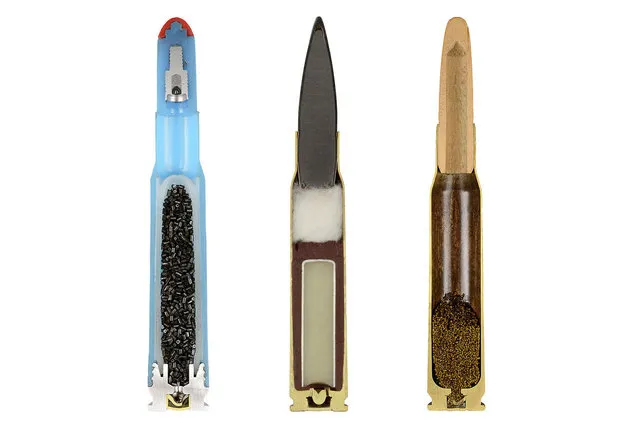
Sabine Pearlman‘s photographs find beauty in the destructive engineering of ammunition with this series of cross-sections of bullets cartridges from a Swiss bunker. They reveal the complexity inside each case. This series, which consists of 900 specimens, was photographed inside a WWII bunker in Switzerland. Pearlman says that she is intrigued by the beautiful complexity of the ammo set against its destructive purpose, at once showing off humanity’s ability to create and destroy.
27 Jun 2013 12:42:00,post received
0 comments







